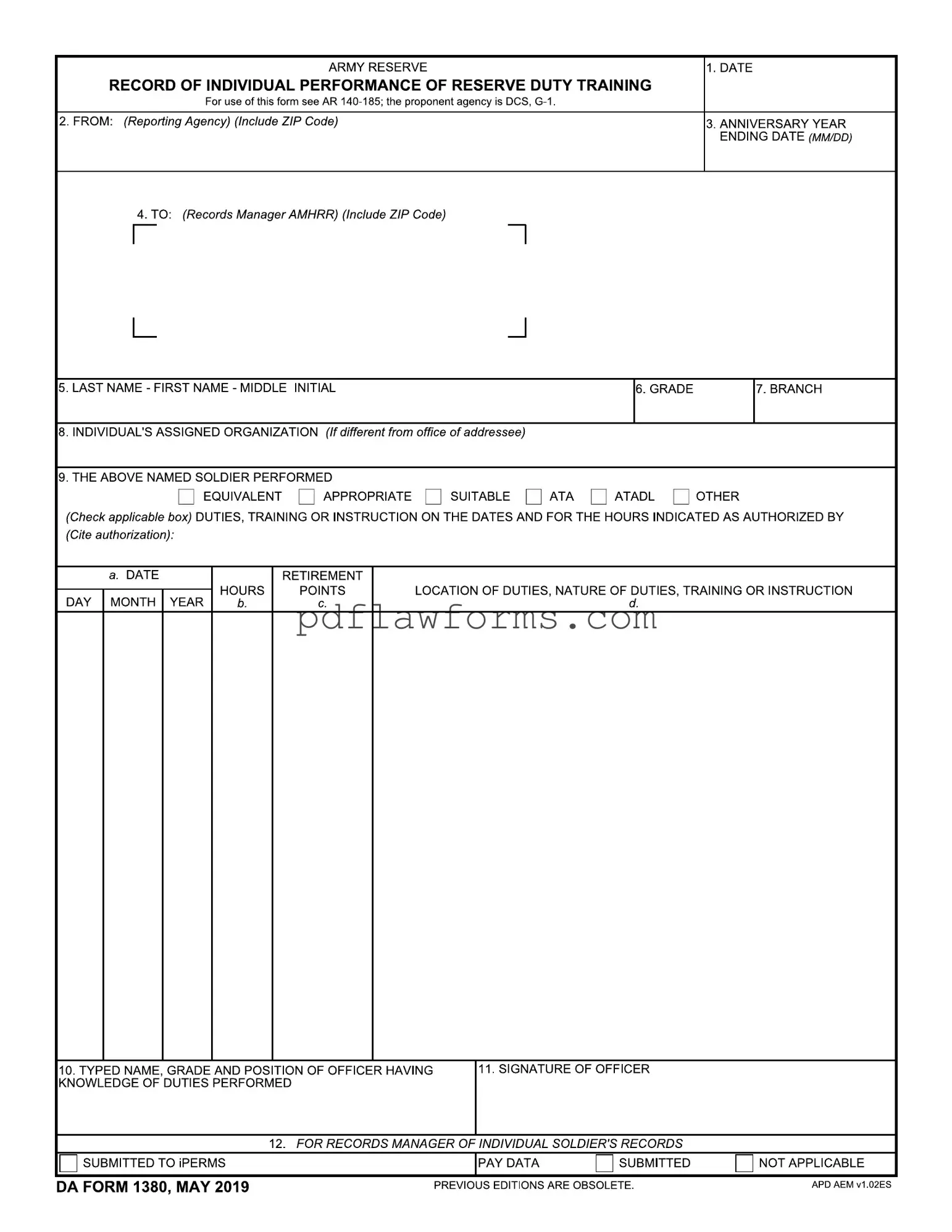When filling out the DA 1380 form, individuals often make several common mistakes that can lead to processing delays or inaccuracies in records. One frequent error is failing to complete all required fields. Each section of the form must be filled out accurately to ensure that the information is complete. Omitting details such as the reporting agency or the individual's assigned organization can result in the form being returned for correction.
Another common mistake is incorrect date formatting. The form requires dates to be entered in the MM/DD format. If individuals use an alternative format, such as DD/MM or simply writing out the month, it can lead to confusion and potential processing issues. Ensuring that all dates are formatted correctly is essential for clarity.
People also often neglect to cite the appropriate authorization for the duties performed. Item 9 requires individuals to indicate the type of duty and cite the relevant documentary authority. Failing to provide this information can result in the form being deemed incomplete, leading to delays in processing.
Additionally, errors in calculating retirement points can occur. Individuals must ensure that they enter the correct codes for paid and non-paid duties. Misunderstanding the codes or entering incorrect values can affect the retirement points awarded, which may impact the individual’s benefits.
Another mistake involves not obtaining the necessary signatures. The form must be signed by an officer who has knowledge of the duties performed. Without this signature, the form cannot be processed. Individuals should ensure that all required signatures are obtained before submission.
Some people may also overlook the importance of submitting the form by the last day of each duty month. Timeliness is crucial for processing and ensuring that records are up to date. Delays in submission can lead to missed pay or retirement points.
Lastly, individuals sometimes fail to keep a copy of the submitted form for their records. Retaining a copy can be beneficial for future reference and in case any discrepancies arise. Keeping personal records ensures that individuals have documentation of their submitted duties and training.
